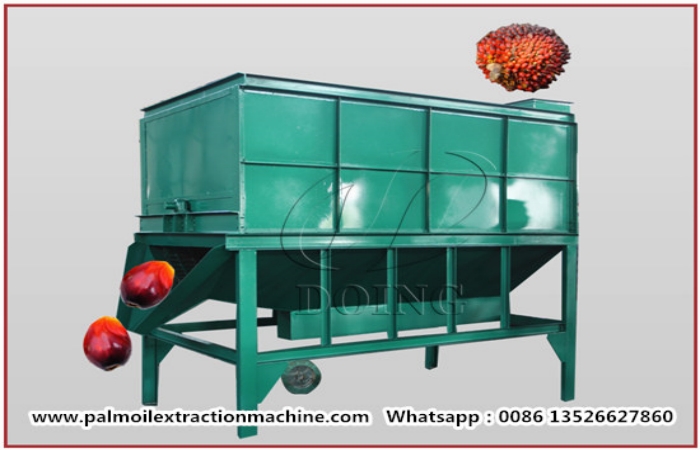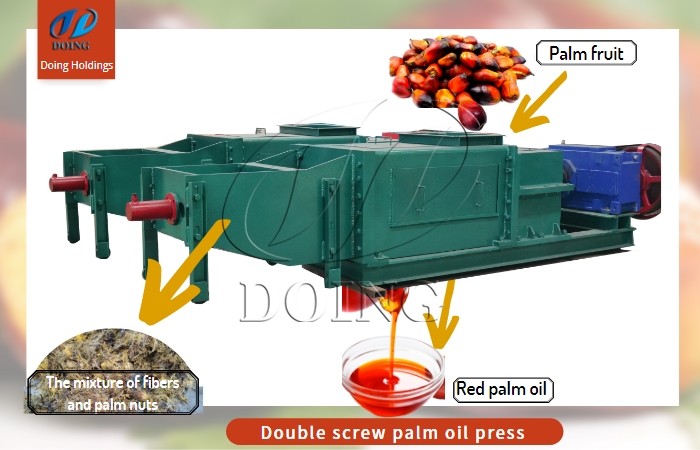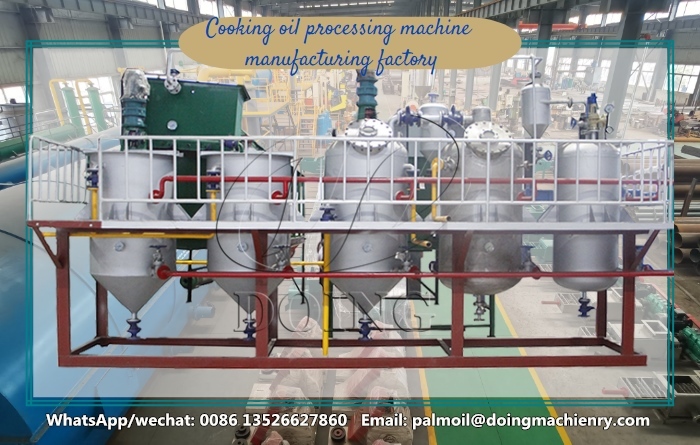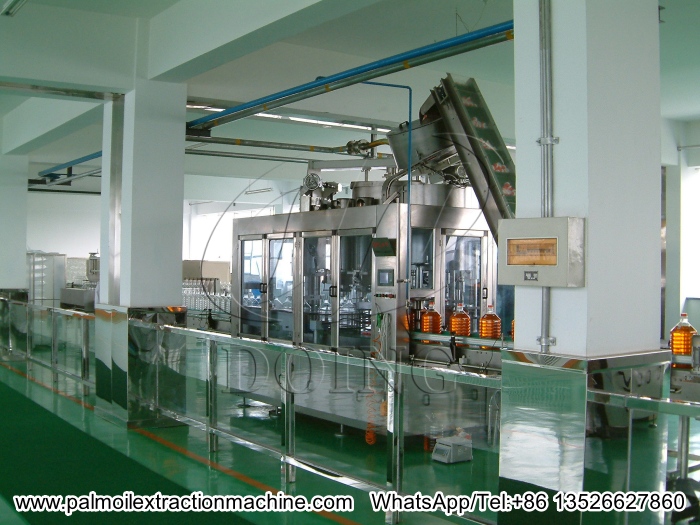How does a modern industrial palm oil processing plant produce palm oil?
If you've ever wondered how a modern industrial palm oil processing plant transforms palm fruit bunches into premium palm oil, you're in the right place. Let Henan Glory guide you through every stage of a modern industrial palm oil processing plant's operation—from fresh palm fruit bunches to finished palm oil, and beyond.
Step 1: Harvesting & Transport
Freshness begins at the source. Palm fruit bunches are harvested at peak maturity and transported to your palm oil processing plant within 24 hours to minimize spoilage and preserve oil quality. This handling ensures effective control of free fatty acids (FFA) from the outset.
Step 2: Sterilization & Threshing
Upon arrival, the fruit bunches undergo steam sterilization—a crucial step that halts enzymatic activity, prevents oil degradation, and softens the fruit for easier processing. The sterilized palm fruit bunches are then mechanically threshed to separate palm fruit from the bunches.
 Palm fruit threshing machine
Palm fruit threshing machine
Step 3: Digesting & Mechanical Pressing
First, the separated palm fruit is sent to a digester for processing. This step crushes the soft pulp of the palm fruit and breaks down the cell walls of the fruit tissue for easy oil extraction. The palm fruit is then processed using professional screw presses for mechanical oil extraction. This process efficiently extracts crude palm oil (CPO) while maximizing yield. The resulting CPO, containing solid residues and moisture, then moves to the oil clarification stage.
 Palm oil pressing machine
Palm oil pressing machine
Step 4: Oil Clarification
The crude palm oil undergoes a multi-stage clarification process to remove residual moisture, solid impurities, and contaminants. It involves:
Settling & Separation: An oil clarifier tank is used, where impurities settle by gravity for initial separation.
Mechanical Filtration: Equipment such as vibrating screens (for coarse solids) and plate-and-frame filter presses (for fine residues) is used to remove remaining impurities.
Vacuum Heating: This step removes moisture from the crude palm oil.
After this purification, your crude palm oil achieves a clean, high-quality state, ready for subsequent refining (if required) or sale.
Step 5: Refining Process
To meet diverse market requirements, your crude palm oil may need to be refined:
Degumming: Removes gums and phospholipids
Deacidification: Reduces free fatty acid content
Decolorization: Eliminates pigments using bleaching earth
Deodorization: Steam heating removes unwanted odors and flavors
The final product is stable, neutral RBD (Refined, Bleached, and Deodorized) palm oil.
 Palm oil refining machines
Palm oil refining machines
Step 6: Fractionation (Optional)
When you need palm oil with specific physical properties (e.g., melting point, fluidity) to match different production needs, fractionation becomes a key customized processing step.
Palm Olein (liquid fraction): Low melting point (liquid at room temperature) and good heat stability. Widely used in: daily cooking oils (home/catering); frying oils (fast food, snacks, oxidation-resistant at high temperatures); raw material for salad dressings or instant noodle oil packets.
Palm Stearin (solid fraction): High melting point (solid at room temperature). Main applications: food industry (margarine, shortening, bakery products like bread/cookies to improve texture and crispness); oleochemical industry (raw material for soaps, candles, cosmetics like body butters to add thickness and stability).
This targeted fractionation not only expands the application scope of palm oil but also significantly boosts its added value, helping you meet the diverse demands of both food and industrial markets.
Step 7: Quality Assurance & Packaging
All final products undergo rigorous testing in your well-equipped laboratory, including analysis of FFA levels, moisture content, impurities, color, and stability. Once approved, modern processing plants usually use fully automated filling and packaging machines to package the refined palm oil into packages of different specifications for easy market sales.
 Palm oil filling and packaging machines
Palm oil filling and packaging machines
Step 8: By-Product Valorization
Modern industrial palm oil processing plants adopt a circular, zero-waste strategy to maximize the value of all by-products:
Empty Palm Bunches (EPB): These are transported to the boiler house, where they are combusted as renewable biomass fuel to generate heat or steam. This energy directly powers heating processes in the production chain (e.g., oil clarification, refining).
Palm Nuts (Kernel): These are processed through shelling and pressing to produce palm kernel oil—a premium product used in food, cosmetics, and industrial applications. The leftover palm kernel meal is used as high-protein animal feed.
This strategy not only reinforces sustainability but also extends the value chain, turning every by-product into your revenue or resource opportunity.
Modern industrial palm oil processing plants not only enhance production efficiency but also make the palm oil production process more sustainable through advanced technology and automated machines. If you are interested in investing in the palm oil industry or expanding your production scale, please contact Henan Glory. We will provide you with professional technical support and high-quality product services.
 PREV:How Does a Double Screw Palm Oil Presser Work?
PREV:How Does a Double Screw Palm Oil Presser Work?
 NEXT:What is the Sludge Treatment Process in a Large Palm Oil Mill?
NEXT:What is the Sludge Treatment Process in a Large Palm Oil Mill?
Leave A Message
If you want to know more information about How does a modern industrial palm oil processing plant produce palm oil? . pls kindly leave your phone number, We will back to you ASAP once we got your message.
-
 How to start a palm oil milling and processing plant?
How to start a palm oil milling and processing plant?
-
 How to start a palm oil processing business in nigeria?
How to start a palm oil processing business in nigeria?
-
 How to produce refined vegetable oil from palm kernel oil?
How to produce refined vegetable oil from palm kernel oil?
-
 What are the steps in palm oil production?
What are the steps in palm oil production?
-
 What Are the Benefits of Using a Professional Vegetable Oil Refining Machine
What Are the Benefits of Using a Professional Vegetable Oil Refining Machine
-
 Henan Glory 1T/H Plug-and-Play Palm Oil Press Unit
Henan Glory 1T/H Plug-and-Play Palm Oil Press Unit
-
 Step-by-Step Process: How a Palm Kernel Oil Refining Machine Works
Step-by-Step Process: How a Palm Kernel Oil Refining Machine Works
-
 What Are the Factors Affecting the Quality of Palm Oil?
What Are the Factors Affecting the Quality of Palm Oil?


